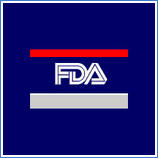 Image via Wikipedia
Image via WikipediaToday I have some updates from the FDA to share with those of you out in antibiotic land and anyone else who might be interested.
Open FDA – a New Website.
The FDA recently announced the establishment of a new website called, FDA Basics for Industry. The website is actually very useful, especially for those just dipping their feet into the waters of drug, biologic, device etc. discovery and development. There are links to basic, explanatory documents to guide the visitor to the appropriate FDA agency for their project, to show them where and how to find appropriate guidance documents and, perhaps most importantly, how to ask questions and identify appropriate contacts within the agency. The website is part of the overall transparency initiative taking place at the agency.
Of course, as far as antibiotics are concerned, transparency has not been the issue. The problem has been the release of guidance documents requiring infeasible trial designs for product-registration. The FDA has been transparent about what they want – it’s just that what they want cannot be done on planet Earth. In one case, where at least the design was feasible, for skin infections, the Infectious Diseases Society has complained that the endpoints required by the agency are clinically irrelevant.
Speaking at the Reuters Health Summit in New York last week, Dr. Hamburg, the Commissioner of the FDA, announced the establishment of the website. She also discussed her intention to speed review processes and to examine and perhaps reform the “troubled” device unit at the agency, according to Reuters.
Guidance for the Development of Combination Products.
Last year, a revised ICH guidance for non-clinical studies to support human trials was released. In section XVII, the topic of development of fixed combination products is addressed. This guidance should be very useful for all who are developing such products – and I’m specifically talking to all those of you who are developing B-lactam-B-lactamase inhibitor combinations! The key portions of the guidance are shown below –
Where there are two late stage products for which there is not adequate clinical experience with co-administration, but there are no causes for significant toxicological concern based on the available data, nonclinical combination studies generally are not recommended to support small-scale, relatively short-duration clinical studies (e.g., phase 2 studies of up to 3 months’ duration). Nonclinical combination studies, however, are recommended before large-scale or long-term combination trials, as well as for marketing.
For combinations of an early stage entity(ies) with clinical experience with a late stage entity(ies), for which there is no significant toxicological concern, combination toxicity studies are not recommended to support clinical proof-of-concept studies of up to one months’ duration. The clinical study of the combination should not be longer than the clinical experience of the individual entities. Later stage or longer duration clinical studies should be supported by a nonclinical combination toxicity study.
For combinations of two early stage entities, nonclinical combination toxicity studies are recommended to support clinical trials.
Guidance for Industry Codevelopment of Two or More Unmarketed Investigational Drugs for Use in Combination has also just been released. Again, for anyone developing such combinations of early stage drugs, this is an important guidance. In this case, the guidance focuses on two compounds that have not been studied in people to any significant extent. But there is a good deal of useful information here for anyone considering development of any combination product, including those of you working on B-lactam-B-lactamase inhibitor combinations.

No comments:
Post a Comment